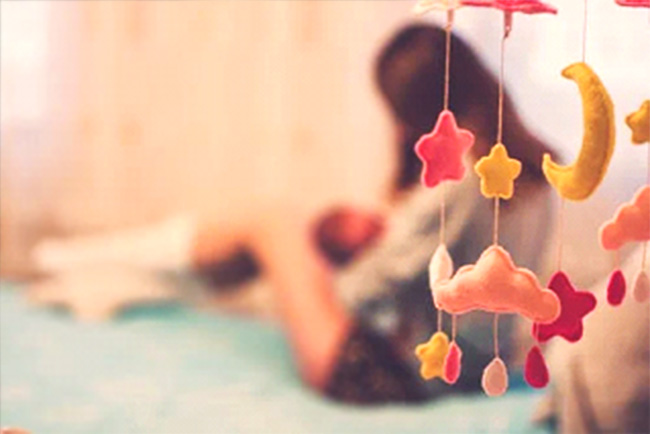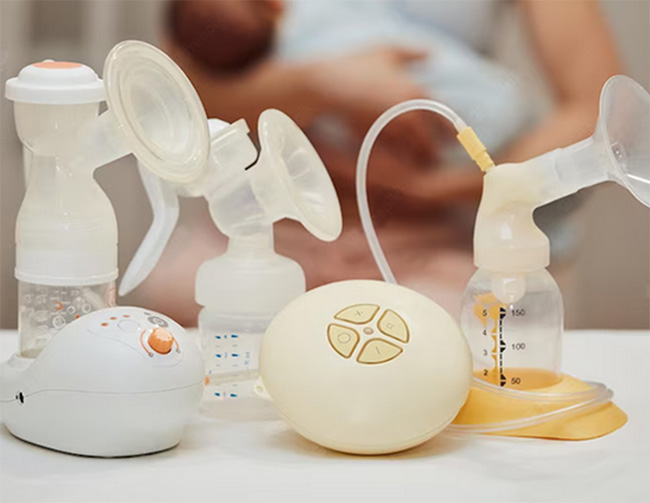There can be number of problems which can happen during breastfeeding leaving both mother and baby unhappy. The most common issues can be cracked or sore nipples, blocked milk ducts, and breasts that are painfully engorged with milk (or don’t seem to be producing enough milk). Especially in the first few weeks, breastfeeding can be a physically tiring process, and it may take some time before mother can be more comfortable and can make baby comfortable as well.
Tips to start Feeding
Release the pressure
- Before you start feeding, release a little bit of milk by hand. This will take away some of the pressure and help your baby to latch more easily. To do it, press repeatedly with your fingers above and below the nipple area.
- If your breasts are so full that no milk comes out, apply a hot compress for several minutes. A wet washcloth will work, or try a sopping-wet diaper, which holds a lot of water and retains heat. Just soak a diaper in hot water and apply it when you’re in the tub or shower.
- Use a breast pump to get the milk flowing, or to finish the feeding. With a breast pump you can apply steady, constant suction. This encourages the milk to “let down” and makes suckling easier for the baby. Also, if your baby is full or falls asleep before you finish nursing, use the breast pump to finish.
- Nurse frequently, day and night. In fact, you should nurse about 8 to 12 times during every 24-hour period. This will keep your breasts from filling up with too much milk. Feed the baby every time he seems interested.
Choose better position for you and baby
- Use a nursing pillow, a horseshoe-shaped cushion specially designed for nursing mothers. It fits around your midriff, providing a convenient armrest when you’re cradling your baby. Two popular brands are the Boppy and My Brest Friend.
- Make sure your baby is not too warm. If an infant is all wrapped up while nursing, she’s more likely to drowse off in the middle of feeding.
- Feed your baby in a quiet, dimly lit environment. Relaxation makes the process easier for everyone.
- When you feed the baby, make sure her entire body is facing yours. Hold her buttocks in one hand, supporting her head in the crook of that elbow. Slide your other hand under your breast, fully supporting it. Tickle your baby’s lower lip. This will prompt her to open her mouth. Pull her straight in, quickly, so her mouth attaches to your nipple. Be sure she takes the whole nipple into her
- mouth, or as much of it as possible.
- When the baby is full, gently insert your pinkie between the corner of her mouth and the skin of your nipple to break the suction. Babies have a natural survival reflex: They hold on tighter if they’re suddenly interrupted while sucking. If you can gradually break the seal between your nipple and her mouth before you pull her away, you’ll reduce needless tugging.
Alternate frequently
- To make sure each breast is doing its share, start each feeding with the breast you ended with at the previous feeding. Too tired to remember which breast that was? Fasten a safety pin to your bra on the side where you should begin next time. By switching the breast you offer first, you give each one a chance to get completely emptied.
Things to produce more
- Apply pressure to your chest to stimulate milk flow. According to doctors who specialize in acupressure techniques, the best pressure points are directly above your breasts. Place your thumbs between the third and fourth ribs directly down from your collarbone and in line with your nipples. Press steadily for a minute or so. If this helps, you can repeat as often as you like.
- Drink fennel tea each morning. Herbalists have long recommended fennel to first-time mothers to help increase milk production. No one is certain why or even if it works, but some research indicates that fennel may have a mild estrogen like effect, which could encourage the production of breast milk. Or perhaps babies just like fennel’s licorice like taste. Simmer one teaspoon of fennel seeds in one cup of hot water for about five minutes, strain out the seeds, and drink the tea.
- Moringa leaves are also very effective to help in producing more milk. Take half teaspoon of moringa leaf powder in breakfast or you can brew the tea from moringa tea. It will also give you more energy and can treat many other symptoms like inflammation and other body pains.
- Another herb said to promote lactation is chaste tree, also known as chasteberry. It’s been shown to affect hormone production. Drink a cup or two each day, or take 225 milligrams of a chasteberry supplement.
- Try a daily dose of fenugreek. In the past, nursing mothers used to eat a teaspoon or so of fenugreek seeds every day. Now you can purchase fenugreek in capsule form. The recommended dose is 600 to 700 milligrams.
Heal soreness in nipple
- If one nipple is particularly sore, offer the other one first to your baby. Even if that’s the same nipple you offered first during the previous feeding, you’ll want to favor the “good” nipple until the painful one feels better.
- Between feedings, place a cold washcloth on each breast to relieve soreness.
- If your nipples are cracked or tender, try vitamin-E oil. Pierce a vitamin E capsule, squeeze out some of the liquid, and rub it in. Be sure to clean off any remaining liquid before the next feeding. No vitamin E capsules on hand? Try olive oil, sweet almond oil, lanolin cream, or a product called Bag Balm.
Heal clogged milk duct
- For a clogged milk duct (which may present itself as a red, tender lump in your breast), soap the affected area while you’re in the bath or shower and then gently run a wide-toothed comb over it to stimulate milk flow and help clear the blockage. (In general, however, avoid using soap on your nipples, as it can dry them out.)
- Empty your breasts as completely as possible during each feeding. Offer your baby the affected breast first.
- Try to gently press the lump toward your nipple during feeding.
- Increase blood flow to the area by placing a warm washcloth on your breast, then gently massaging the breast.
- Make sure your bra is loose enough that it’s not pressing into the breast and causing the blockage.
If you’re concerned that your baby isn’t getting enough milk, immediately talk to your doctor or lactation educator. Definitely contact the doctor if your baby hasn’t eaten in 24 hours. You also need to consult with your doctor if you have a red, tender area on a breast, as well as flu like symptoms and a fever. These are symptoms of a breast infection known as mastitis, which is caused by bacteria slipping into your breast through cracks in the nipple. It’s treatable with antibiotics, and you can continue breast-feeding your baby while you’re being treated.






